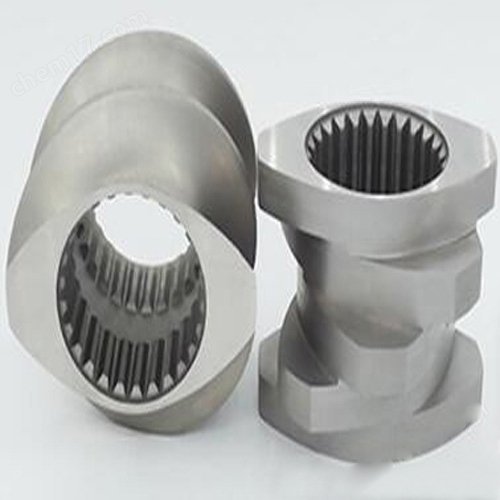In the plastic processing industry, twin-screw extruders have become important equipment due to their high efficiency and stable performance. As one of the core components of twin-screw extruders, threaded sleeves play a crucial role in the extrusion process. This article will provide a detailed introduction to the threaded sleeve of a twin-screw extruder, exploring its structure, working principle, and role in the extrusion process, with the aim of enhancing a deeper understanding of twin-screw extruders and their key components.
1、 Structure and Characteristics
The threaded sleeve of twin-screw extruder is usually made of high-strength and wear-resistant materials, such as hard alloy or special steel. It adopts a twin-screw design, with threaded sleeves on each screw to achieve more uniform and efficient material conveying and mixing. The internal structure of the threaded sleeve is complex and delicate, and its design aims to optimize the flowability and mixing effect of the material during extrusion.
Specifically, the surface of threaded sleeves is usually treated with special processes to improve their wear resistance and corrosion resistance. At the same time, its structure fully considers the flow characteristics of materials during extrusion, and through reasonable pitch and groove depth design, it achieves efficient transportation and uniform mixing of materials between the screw and the threaded sleeve.
2、 Working principle
During the working process, the threaded sleeve and screw together form a closed conveying channel. When the screw rotates, the material advances along the channel under the push of the threaded sleeve. Due to the mutual meshing of the twin-screw and the special design of the threaded sleeve, the material is constantly subjected to shearing, stretching, and mixing during the advancing process, thus achieving the transition from solid to molten state.
The role of the threaded sleeve is crucial in this process. It can not only provide sufficient thrust to smoothly advance the material inside the extruder, but also achieve uniform mixing and full plasticization of the material through its complex internal structure. In addition, threaded sleeves can effectively prevent material blockage or retention during the extrusion process, ensuring the stability and continuity of the extrusion process.

